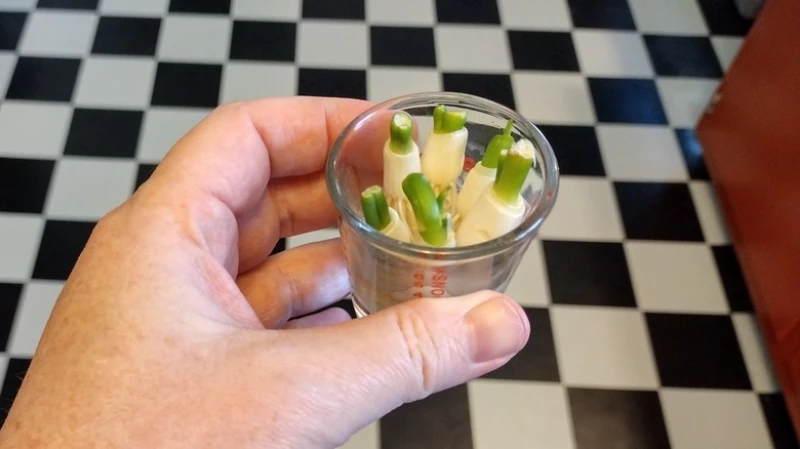Repurposing food scraps to grow new produce is an intriguing idea. Not only does it help reduce waste that would otherwise end up in landfills, but it also offers a cost-effective way to enjoy fresh ingredients. Personally, I've experimented with regrowing vegetables from scraps with success. For instance, when I noticed sprouts on a red onion in my kitchen, I decided to plant it in my garden. To my surprise, it yielded a small harvest of onions. Encouraged by this, I also attempted regrowing green onions in water, a seemingly unconventional method that proved to be effective.
Over the years, there have been numerous claims about the possibility of regrowing vegetables like lettuce, celery, cabbage, and green onions from scraps. The concept sounds intriguing - as long as the root section remains intact, there is a chance to grow new veggies. However, amidst all these articles and discussions, the actual end results are often missing. The idea of witnessing a full celery stalk flourishing in water on a kitchen windowsill seems more like a myth than a reality. As someone with extensive experience as a master gardener, I understand the importance of nutrients for plant growth. While water is essential, it alone cannot suffice for a plant's needs. Despite this knowledge, I decided to embark on this regrowing journey to satisfy my own curiosity.
My initial attempt at regrowing green onions ended in disappointment as the first batch rotted in the water, emitting a foul odor. Despite the setback, I refused to give up and gave it another shot. Learning from my mistake, I adjusted my approach for the second try. Using a shot glass to ensure the root section was submerged in water while allowing the tops to remain upright, I carefully prepared the green onion scraps. Trimming the tops and roots evenly, I hypothesized that by cutting the roots, they might absorb water more efficiently, considering water was the sole growing medium. Placing the shot glass by my kitchen window for indirect sunlight exposure, I eagerly awaited the outcome of this experiment.
To my surprise, the green onion scraps showed signs of growth after my second attempt. The once-discarded scraps were now sprouting fresh green shoots, indicating a successful regrowth process. This experience not only satisfied my curiosity but also highlighted the resilience and adaptability of nature, even in a simple kitchen setting.
I decided to experiment with regrowing green onions from scraps by placing them in my kitchen window. I refreshed the water every few days to prevent bacteria growth and root rot. After about a week, my green onion root sections sprouted new growth, although they only produced green tops instead of the white root part. Despite the limited success, I continued caring for the onions for a month to compare the process to growing green onions from seed in the garden, which typically takes 60 days or more for mature onions.
Unfortunately, my experiment did not yield significant results. The lack of nutrients in water alone was insufficient to sustain proper growth. After a month, my tallest green onion was only about 2 inches tall, and I had only a small amount of greens to use in my salad. Although tasty, the greens began to curl and turn yellow, indicating they were not going to last much longer.
Results
This project was not a success, but it's not because green onions cannot be regrown from scraps. As I suspected, the lack of nutrients in water alone just is not enough to sustain growth. In a month, my tallest green onion was almost 2 inches tall. Out of the handful of onions I started with, I had enough greens to sprinkle on top of my salad. They were tasty, though. Before enjoying my tiny harvest, I noticed the greens were starting to curl and turn yellow on top. I don't think they would have lasted much longer.
Have you ever thought about regrowing vegetables from scraps? If so, transplanting them into soil is a more effective method. Green onions thrive as cool-season crops, making them ideal for planting in the ground or a container once the last frost has passed. These vegetables don't require much space, making them a convenient choice for those with limited gardening space, such as patio growers. Keep in mind that when regrowing green onions, you will likely end up with mostly green tops. However, if you enjoy using them to enhance your meals, it's a great way to reduce food waste and make the most out of your scraps.








